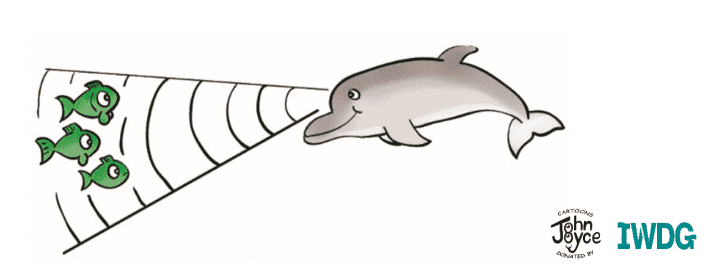Believe it or not the ancestors of whales, dolphins and porpoises once lived on land! Their closest living relative on land today is thought to be the hippo. To allow them to live in water, their bodies went through some evolutionary changes. Their nostrils moved to the top of their head and became their blowhole, limbs developed into flippers and some species developed a dorsal fin. Some species grew to be some of the largest animals alive today, such as the blue whale.
They are very intelligent, and many species live in large family groups called pods.
‘Cetacean’ (pronounced set-aa-shen) is what we call whales, dolphins, and porpoise in the science world. Cetaceans form the taxonomic order of Cetacea. Just like humans’ whales and dolphins are warm-blooded. They need to breathe air, unlike fish which use gills to breathe underwater.
Cetaceans are born with small hairs on their skin, whereas fish normally have scales or a slimy layer over there skin. Fish lay eggs while cetaceans give birth to live young. Whales and dolphins also feed their babies (calves) milk until they are old enough to hunt for fish themselves.
So, cetaceans are mammals just like you, but there are differences. Their bodies have evolved over time to live under the sea. Whales and dolphins breathe through nostrils (blowhole) on the top of their head. This allows them to take in enough oxygen so they can hold their breath much, much longer than land mammals. Whale and dolphin eyes have also adapted to see above and below the water.


Whale Tales with Pádraig and Ruben Whooley
Parts of a whale and Dolphin


Whale and Dolphin Sounds

Whales and dolphins live in an acoustic world, a world dominated by sound. They use sound signals both to navigate and to communicate with each other. Echo location clicks are used to locate prey. These clicks are created in their blowhole, and the signal as it bounces off their prey is received through their lower jaw transmitting the sound to their inner ear. So when a dolphin is pointing at you, it is actually listening to you, not looking at you.
When homing in on fish, dolphins click more frequently to receive more information on exactly where the fish is. These make what we call ‘feeding buzzes’ which gives us an insight in to their behaviour simply through listening to them through a hydrophone.
Here is a recording of bottlenose dolphins foraging in the Shannon Estuary.
Bottlenose Dolphin
Clicks and Whistles
Bottlenose
Dolphin Clicks
Good bit of Dolphin
Dolphin
whistles
Dolphin uses whistles to communicate with each other. It is thought that each individual dolphin has its own signature whistle by wchich other dolphins can recobgnies that individual. It’s like us having our personal name, but they have their own personal whistles. Other whistles and sounds are used to convey information to each other. Other sounds are used to convey information but we don’t really know for sure what they mean. One interesting sound recorded from the Shannon Estuary, we refer to as a gunshot which can be heard here.
We think the dolphins are producing a pulse of intense sound possibly to stun their prey to make it easier to catch. This gunshot was recorded when dolphins were hunting salmon which are a big fish and must be hard to catch.
This contains a series of vocalisations of clicks, groans and whistles. Close your eyes and try and imagine what is going on beneath the waves.
Clicks and Groans
Whistles 1
Gunshot 1
Whistles 2
Flukey Art Competition
IWDG flukey Art competition is now open to children 13 years old or younger.
Create your own flukey art using any medium of your choice.
Closing date: June 2020
We are always delighted to receive our junior supporter’s flukey art depicting marine life in Ireland so please feel free to send in images to be featured on our website.
Send your art to education@iwdg.ie





